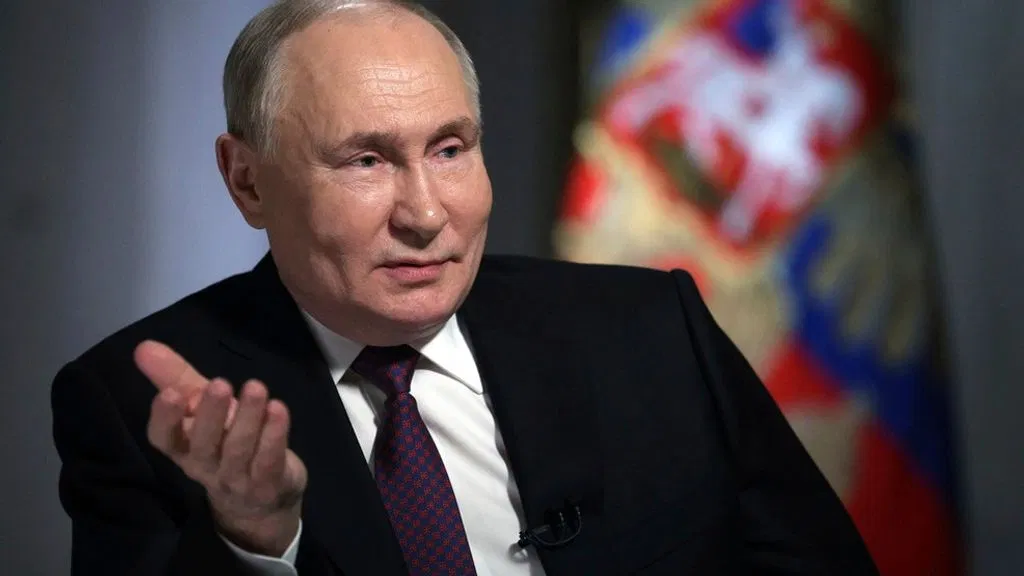Putin Signs Revised Nuclear Doctrine Amid U.S. Missile Decision for Ukraine
President Vladimir Putin has signed a revised nuclear doctrine declaring that any conventional attack on Russia, if supported by a nuclear power, will be considered a joint attack on the country. This significant policy shift comes on the 1,000th day since Russia’s military invasion of Ukraine began on February 24, 2022, and follows U.S. President Joe Biden’s recent decision to permit Ukraine to strike targets within Russia using U.S.-supplied longer-range missiles.
New Nuclear Doctrine Details
The newly signed doctrine emphasizes that a massive aerial attack on Russia could trigger a nuclear response. This reflects Putin’s readiness to leverage the country’s nuclear arsenal as a means of deterrence against the West, particularly as Moscow continues a slow-moving offensive in Ukraine. Kremlin spokesperson Dmitry Peskov stated that the timing of the doctrine’s release was intentional, aligning with the current geopolitical climate and Putin’s earlier instructions to update the doctrine.
The revised doctrine categorizes an attack from a non-nuclear power that receives support from a nuclear power as a joint aggression against Russia. It explicitly states that nuclear weapons may be used in response to either a nuclear strike or a conventional attack that poses a “critical threat” to Russia’s sovereignty and territorial integrity, including that of its ally, Belarus. This vague language allows for broad interpretation and potential escalation.
Implications of U.S. Missile Support
Putin has previously warned that allowing Ukraine to utilize Western-supplied long-range weapons to target Russian territory would effectively place Russia and NATO at war. The updated nuclear doctrine reflects Russia’s heightened sensitivity to Western military support for Ukraine, suggesting that any increase in such support could be met with a stronger military response from Moscow.
The doctrine elaborates on conditions under which Russia might employ nuclear weapons, broadening the criteria compared to previous iterations. It specifies that nuclear arms could be used in response to massive air attacks involving ballistic and cruise missiles, drones, and other aerial vehicles. This expansion of triggers for nuclear weapons use reflects a shift in strategy designed to deter perceived threats from NATO and other military coalitions.
Historical Context and Strategic Considerations
The updated nuclear doctrine is part of a larger strategy by Putin to reinforce Russia’s military posture amid ongoing conflict in Ukraine. Since the invasion began, Russian officials have repeatedly invoked the threat of nuclear force to dissuade Western countries from increasing their support for Ukraine. The doctrine’s revision comes at a time when Russian hawks have been advocating for a tougher stance, arguing that previous formulations failed to deter Western aid and created a perception that Moscow would not resort to its nuclear capabilities.
President Alexander Lukashenko of Belarus has allowed Russian forces to use Belarusian territory for operations in Ukraine, including the deployment of tactical nuclear weapons. This collaboration illustrates the deepening military ties between Russia and Belarus, further complicating the security landscape in Eastern Europe.
Conclusion
Putin’s signing of the revised nuclear doctrine signals a significant escalation in Russia’s military posture, particularly in response to U.S. support for Ukraine. By broadening the conditions under which nuclear weapons could be used, the Kremlin is sending a clear message to the West that it is prepared to escalate the conflict if it perceives an existential threat. The implications of this doctrine for global security and the ongoing conflict in Ukraine will be closely scrutinized by international observers as tensions continue to rise.
Thank you for taking the time to read this article! Your thoughts and feedback are incredibly valuable to me. What do you think about the topics discussed? Please share your insights in the comments section below, as your input helps me create even better content.
I’m also eager to hear your stories! If you have a special experience, a unique story, or interesting anecdotes from your life or surroundings, please send them to me at whatsissue@gmail.com. Your stories could inspire others and add depth to our discussions.
If you enjoyed this post and want to stay updated with more informative and engaging articles, don’t forget to hit the subscribe button! I’m committed to bringing you the latest insights and trends, so stay tuned for upcoming posts.
Wishing you a wonderful day ahead, and I look forward to connecting with you in the comments and reading your stories!
